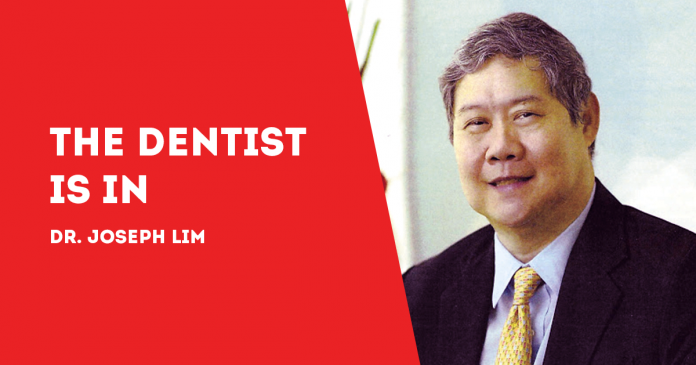
IT HAS COME to the point that dentists are being told to avoid the use of the spittoon in clinics.
It illustrates how health care authorities have recognized the unique place that dentists occupy in a pandemic.
It is simply this – that dentists work in close proximity to the mouth of patients. In this manner, they are at high risk of being infected by COVID-19.
On the other hand, this close proximity also presents the potential risk of infected dentists passing on COVID-19 infection to patients.
Avoiding the use of the spittoon is one way to minimize the risk of COVID-19 transmission. It is preferable to instruct the patient to spit into a disposable cup or use high-speed suction instead.
This is the new normal for dentistry.
Dentists are now being asked to avoid re-call visits by prioritizing single visit procedures.
Even ventilation in dental clinics is now being considered very carefully. Adequate ventilation is important to reduce the risk of transmission in closed settings.
According to the type of ventilation available (mechanical or natural), ventilation and airflow must be increased or must be sufficient.
The use of split air-conditioning or other types of recirculation devices must be avoided. Filtration systems must be considered, such as the installation of exhaust fans, wind turbines or High-Efficiency Particulate Air (HEPA) filters.
Any modifications to oral health care facility ventilation need to be made carefully, taking into consideration the cost, design, maintenance and potential impact on the airflow in other parts of the facility.
Dental clinics are now being asked to declutter all work surfaces in the treatment area. Only the instruments and other materials that are indispensable for the procedure to be performed must be around.
Oral health care personnel undertaking or assisting in the procedure must strictly adhere to hand hygiene protocols. They must be trained to use appropriate Personal Protective Equipment (PPE), following a risk assessment and standard precautions: gloves; fluid resistant disposable gown, eye protection (face shield that covers the front and sides of the face or goggles) and a medical mask.
A fit tested N95 or FFP2 respirator (or higher) is recommended when aerosol-generating procedures are performed.
All oral health care personnel undertaking or assisting in the procedure must be trained and should understand how to properly put on, use and remove PPE to prevent self-contamination.
Respirators, surgical masks, gowns and gloves should be discarded after every patient. Re-usable eye protection and face shields must be cleaned and disinfected prior to re-use.
All patient-care items (dental instruments, devices, and equipment) must be sterilized or otherwise subjected to high-level disinfection. Staff performing cleaning and disinfection should wear appropriate PPE.
Pre-examination antiseptic mouth rinse is essential.
Patient must rinse mouth with 1-percent hydrogen peroxide or 0.2-percent povidone iodine for 20 seconds prior to examination or starting any procedure. This is to reduce the salivary load of oral microbes, including SARS-CoV-2, the virus that causes COVID-19.
In settings with widespread community transmission during the COVID-19 pandemic, oral health care involving aerosol-generating procedures should be avoided or minimized. Minimally invasive procedures using hand instruments should be prioritized.
There it is. This is the new normal for dentistry.
***
Dr. Joseph D. Lim is the former Associate Dean of the UE College of Dentistry, former Dean of the College of Dentistry, National University, past president and honorary fellow of the Asian Oral Implant Academy, and honorary fellow of the Japan College of Oral Implantologists. Honorary Life Member of Thai Association of Dental Implantology. For questions on dental health, e-mail jdlim2008@gmail.com or text 0917-8591515./PN

